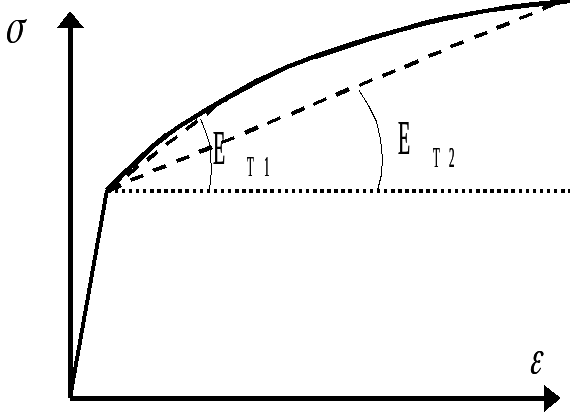4. Validity of large deformation models#
4.1. Identifying parameters#
It should also be noted that the formalism presented and studied here does not extend the validity of laws of behavior in the field of major deformations; it only proposes an objective derivation from them. To clarify this point, it is possible to consider the case of an elastoplastic law with linear isotropic work hardening. This type of plasticity law is physically valid in small deformations; its use is extended to large deformations, but its physical validity can be rightly questioned.
In addition, an identification made on tests with small deformations must potentially be reconsidered; in FIG. 2, a traction curve modelled by linear isotropic work hardening is presented: the tangent module must necessarily be defined in relation to the deformation range in question. For small deformations, it seems more appropriate to use \({E}_{\mathrm{T1}}\); if the deformations are larger, it seems more appropriate to use \({E}_{\mathit{T2}}\) as the value of the work-hardening slope. But we feel that it is the physical validity of the law itself that should be questioned.

Figure 2: Identification in large or small deformations